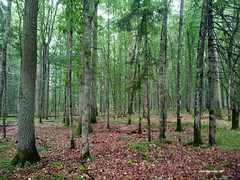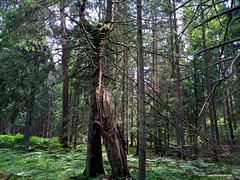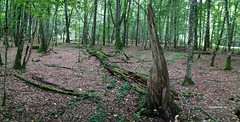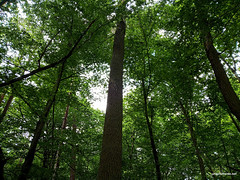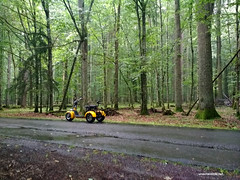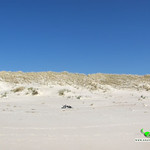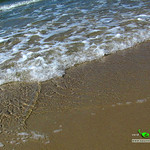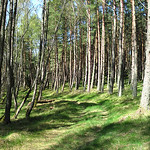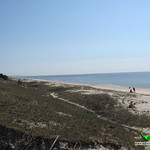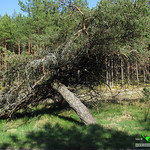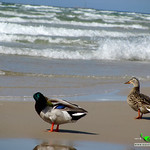The Shio-Mgvime monastery (Georgian: შიომღვიმე, Shiomghvime, literally meaning “the cave of Shio”) is a medieval monastic complex in Georgia, near the town of Mtskheta. It is located in a narrow limestone canyon on the northern bank of the Kura River, some 30 km from Tbilisi, Georgia’s capital.
Photos taken on April, 18, 2017.
We chose the trail to the monastery by a mountain trail, it’s about 6,5 km of the way. Where was 2,2 km just go up. That was great! We were able to see nature and fauna and flora. We began our journey from Dzegvi village and went along the trail. We were guided by GPS. There’s an approaching thunderstorm that worried us. Alleluia! The thunderstorm passed us by. We did’t want to meet a thunderstorm in the mountains Is it dangerous. Especially, there were high voltage lines nearby.
Of course we saw landslides. Especially, up to this point there was an earthquake. There was a wind. We heard the whispering mountains.
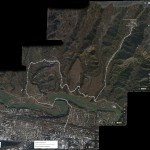
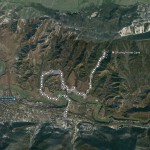
We were afraid to meet poisonous snakes. But we met only turtles. They are so sweet. They had a wedding season. 🙂
We reached the monastery. Monastery was covered with mystery and history. I just got down on my knees there. The monastery is very interesting! If we again go to Georgia, I will return to the monastery in the same way.
There was difficult to return to Tbilisi. Thank God, a random tourists agreed to take us to the nearest village. There we boarded a bus to Tbilisi.
We were lucky. Otherwise us had to walk to Dzegvi or spend the night in the mountains. It was 7 o’clock in the evening. The nights there were expected to be cold. Perspective was not fun. Because we did not have any equipment to survive in the wild. In the backpack we had two sandwiches and a bottle of water…. and Geogian wine, the wine was untouched, the mountains do not like wine if you are active in this moment. You must be careful!
p.s. Of course, there was a time when we lost hope of reaching the monastery, because we got seriously lost. But I remembered that Santa Maria was near and I found a new breath and way was near. It gave me confidence. Now I can be a guide in these places. 😉
According to a historic tradition, the first monastic community at this place was founded by the 6th-century monk Shio, one of the Thirteen Assyrian Fathers who came to Georgia as Christian missionaries. St. Shio is said to have spent his last years as a hermit in a deep cave near Mtskheta subsequently named Shiomghvime (“the Cave of Shio”) after him. The earliest building – the Monastery of St. John the Baptist – a cruciform church, very plain and strict in its design, indeed dates to that time, c. 560s-580s, and the caves curved by monks are still visible around the monastery and along the road leading to the complex. The church has an octagonal dome covered with a conic floor and once housed a masterfully ornate stone iconostasis which is now on display at the Art Museum of Georgia in Tbilisi. The monastery was somewhat altered in the 11th and 18th centuries, but has largely retained its original architecture.
The Upper Church (zemo eklesia) named after the Theotokos is a central part of the Shio-Mgvime complex constructed at the verge of the 12th century at the behest of King David IV of Georgia. Initially a domed church, it was subsequently destroyed by a foreign invasion and restored, in 1678, as a basilica. A refectory was built between the 12th and 17th centuries and directly communicates with the Cave of St. Shio. A 12th-century small chapel adorned with medieval murals stands separately on a nearby hill.
An archaeological expedition revealed, in 1937, a 2 km long aqueduct supplying the monastic communities from the nearby village of Skhaltba, and chronicled in 1202 as being constructed by Bishop Anton of Chkondidi, a minister at Queen Thamar’s court.
Shio-Mgvime quickly turned into the largest monastic community in Georgia and by the end of the 6th century it was populated by as many as 2,000 monks. It became a vibrant center of cultural and religious activities and remained under the personal patronage of Catholicoi of Georgia. David IV “the Builder” (1089-1125) made it a royal domain and dictated regulations (typicon) for the monastery (1123). The downfall of the medieval Georgian kingdom and incessant foreign invasions resulted in the decline of the monastery. It saw a relative revival when the Georgian king George VIII (r. 1446-1465) granted Shio-Mgvime and its lands to the noble family of Zevdginidze-Amilakhvari to whom the monastery served as a familial burial ground up to the 1810s.
The monastery was ravaged by the invading Persian troops sent by Shah Abbas I of Safavid in 1614-6. Prince Givi Amilakhvari reconstructed it in 1678, but the 1720s Ottoman occupation of Georgia brought about another devastation and depopulation of Shio-Mgvime. Restored by Prince Givi Amilakhvari in 1733, the monastery was raided and the monks massacred by the Persians less than two years later. Subsequently, Shio-Mgvime was restored and its interior renovated in the 19th century, but it never regained its past importance and role in the spiritual life of Georgia. Under Bolshevik rule, the monastery was closed, but it is now functional and attracts many pilgrims and tourists.

